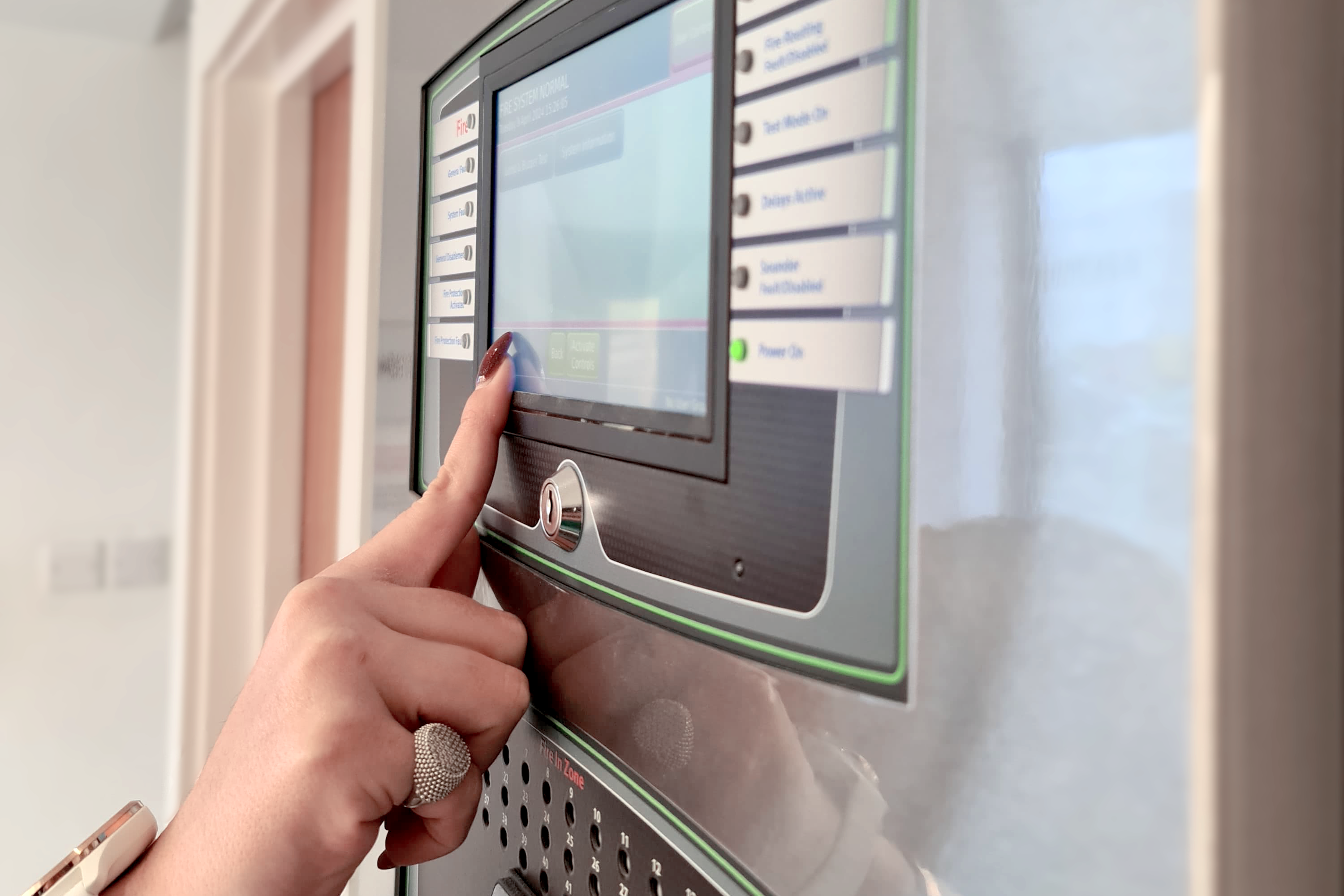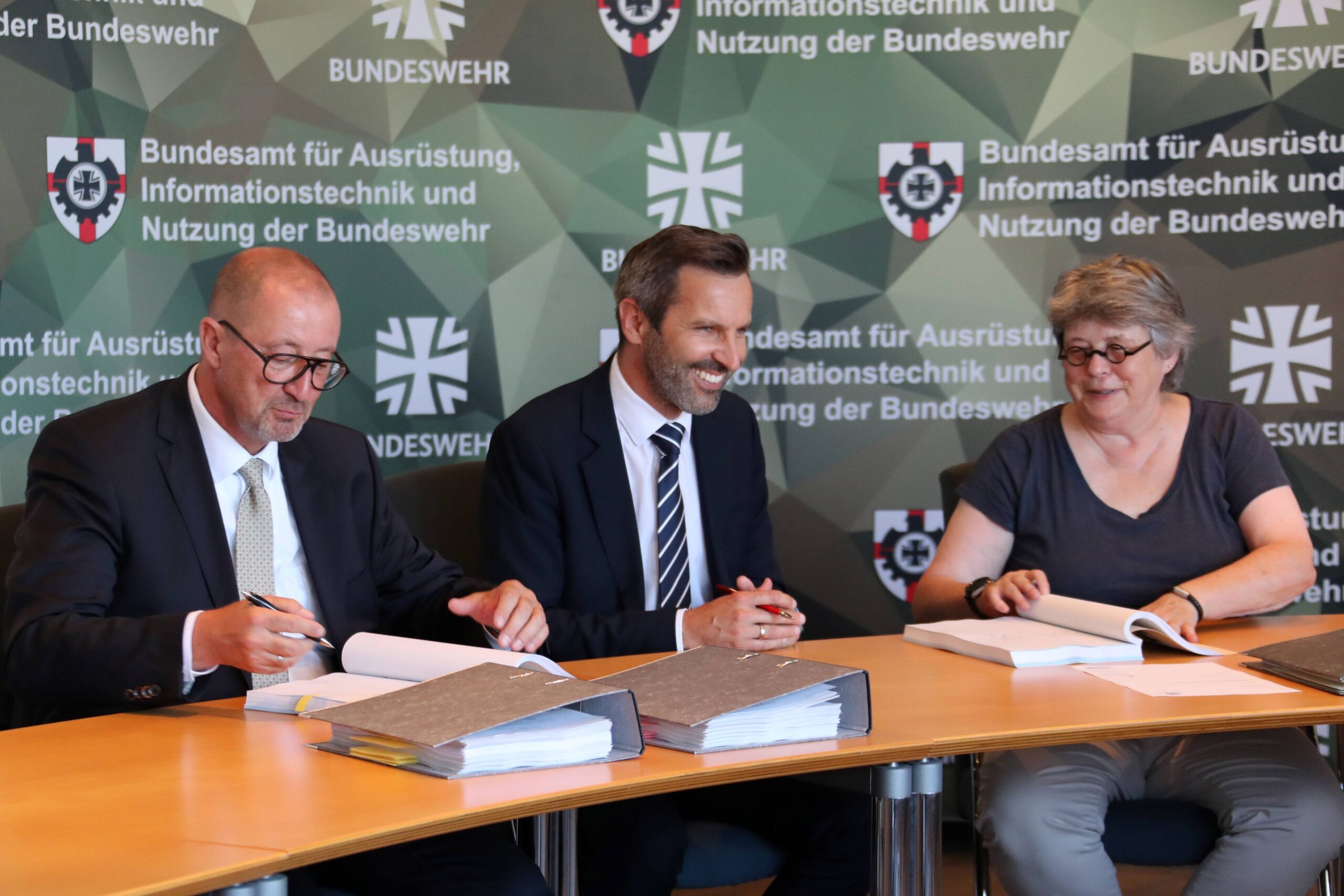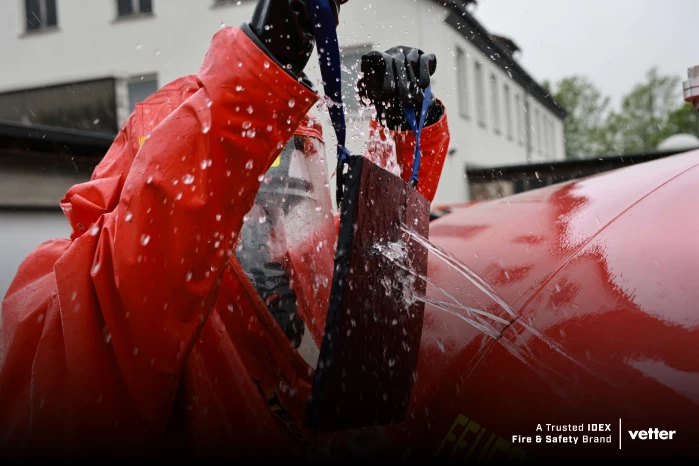 At Interschutz 2010, Oshkosh Corporation Fire & Emergency segment, which includes Oshkosh Airport Products and Pierce Manufacturing, introduced new products to the European market. Attracting huge interest from visitors to the show in Leipzig, Germany, was the new Striker Aircraft Rescue and Fire Fighting (ARFF) vehicle.
At Interschutz 2010, Oshkosh Corporation Fire & Emergency segment, which includes Oshkosh Airport Products and Pierce Manufacturing, introduced new products to the European market. Attracting huge interest from visitors to the show in Leipzig, Germany, was the new Striker Aircraft Rescue and Fire Fighting (ARFF) vehicle.
Under development for more than three years, the new Striker delivers innovative fire suppression technology through unmatched chassis performance and advanced safety systems. Aimed at both civilian and military sites, the vehicle features a 700-horsepower engine and a wheelbase of 236 inches. With hydrants often unavailable at airport locations, there is a high demand in this sector for vehicles than can hold significant volumes of water and the Striker carries 1,500, 3,000 or 4,500 gallons.
Direct input from customers during product development is a hallmark of the Oshkosh research and development cycle.
“The new Oshkosh Striker was designed and built to meet the most demanding fire rescue environments faced by our airport customers,” said Robert G. Bohn, Oshkosh Corporation chairman and chief executive officer. He continued: “The final design of this vehicle is testament to the input from airport fire chiefs and fire fighters around the world. We integrated their ideas and needs with our technical, engineering and manufacturing expertise to create an aircraft rescue and firefighting vehicle that will protect fire fighters and help save lives in airport emergencies.”As Fire Buyer inspected the vehicle at Interschutz, company development engineers illustrated Striker’s many innovative features such as Pulse Delivery® technology
that allows crew to deliver truly dry chemical powder over 90 feet (27metres), more than three times the capability of other dry chemical delivery systems offered by competitors.
Airport trucks frequently use more chemical agents than municipal vehicles, and capacity for dry chemical agent is 500 pounds. There is also electronic foam proportioning and a high-reach extendable turret. The foam tanks carry 420 gallons. Depending on customer requirements, the water system can operate at as low as 300 gallons per minute. The vehicle is pushing functionality to it limits while maintaining Oshkosh’s pedigree of reliability. No less than seven customer focus groups were involved in the end-user feedback mentioned here by Robert G. Bohn, with Oshkosh even visiting their competitors’ customers as well as their own client base to find out what was needed in the field.
 Patented suspension
Patented suspension
Pierce developers and research staff were aware that incidents seldom occur on flat parts of a runway or apron; aircraft tend to crash in ravines and ditches around an airport’s perimeter. Striker can access difficult areas, having 16 inches of wheel travel for improved off-tarmac mobility.
The suspension is Oshkosh’s patented TAK-4® all-wheel solution with dual control arms. From a driveline standpoint the only components that Oshkoshpurchase are the engine and transmission. At 2,000 pounds lighter than its predecessor, the new Striker is generally more manoeuvrable over difficult terrain, has good acceleration and brings fuel usage economies.
The model is designed to exceed National Fire Prevention Association (NFPA) requirements for static side slope stability and the cab is also built to meet Europe’s stringent standards for structural integrity. Oshkosh looked at regulatory requirements across the globe during development. Many clients asked for a vehicle that could if necessary be operated by two crew members. International usage meant that colour-coded controls were crucial for multi-language usage.
‘the Pierce PuC is ideal for municipal fire fighting and emergancy response challenges.’
From past experience Oshkosh knew that succinct translation of control descriptions into Far Eastern languages was difficult and intelligent use of graphical symbols was crucial. Similarly, ergonomic studies revealed that the average height of a fire fighter in the Pacific Rim is six inches less than that of their counterparts in the US and Europe, so there step access to upper compartments was incorporated.
 With 20 new airports currently being built in China, such attention to detail is crucial. The vehicle configuration ensures that all controls in the mission console can be reached from a seated position. Oshkosh were aware of the demands on vehicle captains during incidents and that frequently the captain will be listening to three radios, these being the airport tower, the fire chief and ambulance services.
With 20 new airports currently being built in China, such attention to detail is crucial. The vehicle configuration ensures that all controls in the mission console can be reached from a seated position. Oshkosh were aware of the demands on vehicle captains during incidents and that frequently the captain will be listening to three radios, these being the airport tower, the fire chief and ambulance services.
A vehicle may well approach an aircraft at 100 kilometres per hour. Observing a situation and making life- critical decisions based on a quick summary of the site demands optimum visibility from the cab, especially when the view may be obscured as hoses are deployed and crew work near the vehicle. Also on display from Pierce Fire & Emergency at Interschutz was the Pierce Ultimate Configuration (PUC) vehicle.
The PUC is an industry-changing multi-purpose response vehicle that is engineered to eliminate the need for a bulky pump house. With a wheelbase as short as 172 inches for improved handling, the PUC also provides up to 500 cubic-feet of storage.
The PUC is available on all Pierce custom chassis in side and top mount configurations, as well as on aerial ladders, aerial platforms, pumper/tankers, PUC rescues and custom Contender® vehicles. First introduced in 2007, the PUC – which is engineered to operate on a short wheelbase while also being able to carry extensive emergency equipment – is among the most successful products in Pierce manufacturing history.
Fire departments had indicated to Piece that what they wanted in a first response vehicle was a truck that could dramatically reduces operational steps. Clients wanted something that was safer to use and easy to operate. They also needed free access throughout for easier servicing. Users wanted better organisation and ergonomics with more compartment space.
But all in a rig that remained highly manoeuvrable. A frequent plea was: “Eliminate the pump house so the truck can be built around our needs on the ground and not the pump.” Jim Johnson, Oshkosh Corporation executive vice president and president, Fire & Emergency said: “The Pierce PUC is ideal for municipal fire fighting and emergency response challenges.
Our innovative technologies and compact design made it a prime attraction for fire and emergency departments attending Interschutz and feedback was universally positive.” He continued: “From its space-saving fire fighting system to the smaller overall size, the new PUC has proved itself on narrow streets and in cramped environments.”
The PUC is a multi-purpose response vehicle that has been engineered to eliminate the need for a bulky pump house. It features a simplified two-step pump shift operation and redesigned pump panel for easier operation.
The entire pump system is located above the frame for quicker service and maintenance. With a wheelbase as short as 172 inches (4.37 metres) improving manoeuvrability, the PUC also provides up to 14.16 cubic-meters (500 cubic feet) of equipment storage. The PUC is available on all Pierce custom chassis types in side and top-mount pump panel configurations as well as on 75-foot (22.9-metre) aluminium aerial ladders.
Customers both in the US and internationally are benefiting from PUC pumper, aerial and rescue vehicles as well as the PUC Custom Contender. As Fire Buyer went to press, recent sales had included three PUC pumpers to the City of Pearl Fire Department in Pearl, Mississippi.
The trucks are built on Pierce Velocity® custom chassis. Each pumper features a 500 horsepower engine, TAK-4® independent suspension, 1500 gallon per minute single stage pump, 750-gallon water tank and Husky® 12 foam system. www.piercemfg.com








